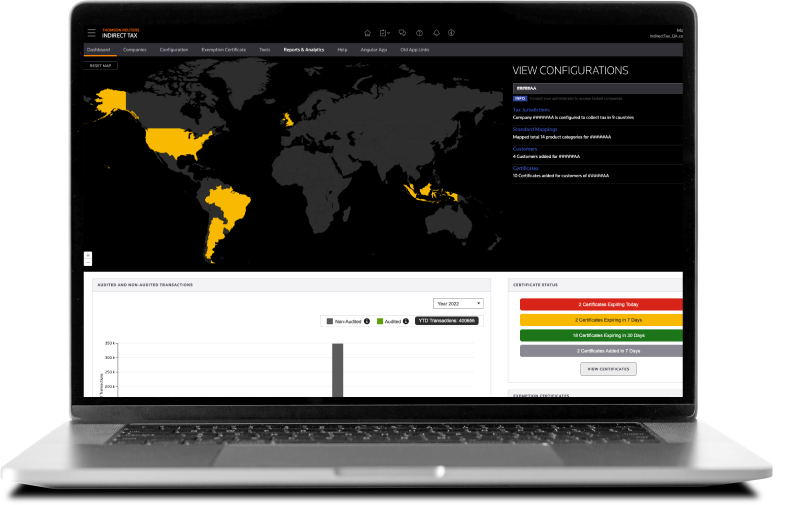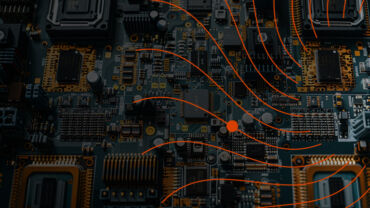Exploring the transformative impact of SAP Clean Core on financial data management for streamlined operations and improved compliance.
In the realm of financial data management, SAP Clean Core is changing the way businesses handle their financial information. This new strategy simplifies and streamlines financial data within SAP systems, propelling organizations towards enhanced performance, accuracy, and transparency in financial reporting. Let’s explore the “Clean Core Approach” concept: what it means for your business and how Thomson Reuters is innovating our tax solutions alongside SAP.
Jump to ↓
| What does ‘clean core’ mean? |
| What are the benefits of a clean core approach? |
| What are the SAP Clean Core principles? |
| Adopting a clean core |
What does ‘clean core’ mean?
A “clean core” in software refers to a design philosophy where the central part of a software system is kept simple, well-organized, and free from unnecessary complexity or dependencies. This core part of the software focuses on the functionalities that are critical for the system’s operations, ensuring they are implemented with clear, maintainable, and scalable code.
The concept of a clean core aims to streamline software maintenance, testing, and upgrades. This means that while customization is possible, the system adheres to standardized guidelines for all core elements, according to SAP.
By segregating essential logic from peripheral features and third-party integrations, developers reduce the likelihood of bugs and enhance overall system stability and performance. This method also simplifies the process of enhancing and modifying software, as the core remains shielded from alterations and expansions in other system components.
SAP Clean Core operates on the principle of simplifying the chart of accounts, reducing the number of open items, and eliminating redundant or unused data. Through this approach, businesses create a more streamlined and manageable data structure, empowering them to extract and interpret financial information with greater ease and efficiency.
What are the benefits of a clean core approach?
Sebastian Schroetel, vice president and head of technology products at SAP, has noted that the phrase ‘keep the core clean,’ has become increasingly significant for businesses. He observed that this concept is discussed in 80% of customer meetings. Many companies are transitioning their ERP systems to the cloud, necessitating the development of extensions and customizations that comply with cloud standards.
SAP Clean Core offers a range of significant advantages that can transform how businesses manage and utilize their financial data. Through the standardization and consolidation of financial data, businesses can streamline reporting processes, reduce manual effort, and minimize errors, resulting in a more streamlined and efficient reporting cycle.
Clean Core significantly reduces the need for manual reconciliations. Through the removal of duplicate data and ensuring uniformity across various systems, businesses can automate numerous reconciliation tasks. This not only conserves valuable resources, but also reduces the likelihood of errors. This enhanced data integrity also strengthens the reliability of financial statements, fostering trust among stakeholders, and facilitating better decision-making.
Clean Core empowers businesses with a comprehensive and accurate view of their financial performance. The simplified chart of accounts and reduced open items provide greater transparency and enable users to analyze financial data more effectively. This enhanced visibility allows decision-makers to make well-informed choices based on real-time insights, driving business growth and success.
In addition to its operational benefits, Clean Core also plays a crucial role in ensuring compliance with regulatory requirements. By maintaining accurate and auditable financial records, businesses can meet reporting obligations and mitigate the risk of non-compliance. This aspect is particularly valuable for companies operating in highly regulated industries, or those seeking to expand globally.
What are the SAP Clean Core principles?
The SAP Clean Core principles are designed to ensure that the core of SAP software remains clean, stable, and efficient. These principles guide the development and maintenance of SAP systems, focusing on keeping the core functionalities free from modifications and customizations that could complicate future updates, upgrades, or migrations.
Here are the key principles of SAP Clean Core:
- Core stability: The core of the SAP system should remain stable and consistent, avoiding unnecessary changes that could affect the system’s reliability. This stability is crucial for ensuring that the core functions perform optimally and are less prone to errors.
- No modifications: One of the fundamental principles is to avoid modifications to the SAP core. Instead of altering the core code, SAP encourages the use of extensions or side-by-side customizations that do not interfere with the core system. This approach helps in maintaining a clean core that is easier to upgrade when new versions are released.
- Separation of concerns: This principle involves separating core functionalities from additional features or custom developments. By keeping these elements distinct, SAP systems can be more easily managed and updated without affecting the core operations.
- Use of SAP Cloud Platform for extensions: To maintain a clean core, SAP promotes the use of its Cloud Platform for developing and running extensions. This strategy keeps the core system clean and leverages cloud capabilities for scalability and integration.
- Simplification and standardization: SAP aims to simplify and standardize processes within the core to reduce complexity and enhance performance. This simplification helps in reducing maintenance costs and improving user experience.
By adhering to these principles, SAP ensures that its core software remains robust, scalable, and easy to maintain, thereby providing a reliable foundation for enterprises to build upon without compromising on performance or future growth potential.
Adopting a clean core
Adopting a clean core approach is essential for businesses looking to optimize their SAP systems and ensure seamless, efficient operations. ONESOURCE Indirect Tax integrations with SAP play a pivotal role in helping users implement a clean core by streamlining and automating the tax compliance process.
Here is how this integration enhances the clean core approach:
Automation of tax calculations: ONESOURCE Indirect Tax automatically calculates taxes for transactions within SAP. This reduces the need for manual interventions, which not only minimizes errors, but also frees up resources to focus on more strategic tasks. Automation ensures that tax calculations are consistent and compliant with current laws and regulations, which is crucial for maintaining a clean core.
Seamless integration: The integration fits smoothly into the existing SAP infrastructure without disrupting core processes. This seamless integration helps maintain the integrity and performance of the SAP system, ensuring that the core remains clean and efficient. By avoiding modifications to the core SAP code, the system remains stable and less prone to issues during upgrades.
Scalability and flexibility: As businesses grow and tax requirements become more complex, the need for a scalable solution becomes critical. ONESOURCE Indirect Tax integration with SAP is designed to scale with the business, accommodating new tax rules and changes in transaction volumes without compromising system performance.
Enhanced compliance: Keeping up with the ever-changing landscape of tax regulations is a challenge for businesses. ONESOURCE Indirect Tax helps ensure compliance by providing updated tax rates and rules, which are automatically applied to transactions. This proactive compliance helps avoid penalties and ensures that the business adheres to relevant tax laws, which is a key component of maintaining a clean core.
Reduced IT complexity: By integrating with SAP, ONESOURCE Indirect Tax reduces the complexity typically associated with tax compliance solutions. It eliminates the need for custom-built solutions or extensive IT involvement, thereby supporting a clean core philosophy that prioritizes minimal customization and maximizes the use of standard, supported software components.
ONESOURCE Indirect Tax integration with SAP not only simplifies the tax compliance process, but also supports the overall health and efficiency of the SAP system, aligning with the principles of a clean core approach. This integration ensures that businesses can manage their tax obligations efficiently, while maintaining system integrity and performance.
ONESOURCE Indirect Tax integrations for SAP are 100% compatible with, and co-developed by, SAP. Security and stability of the core is important and maximizing its health and cleanliness is a benefit of integrating ONESOURCE with SAP. Some of our indirect tax integrations premium certified SAP Endorsed Apps:
ONESOURCE Indirect Tax for SAP S/4HANA Public Edition (US)
ONESOURCE Indirect Tax for SAP ECC and SAP S/4HANA Private Edition (US/CA)
In summary, the interface in ONESOURCE Determination is designed to maintain up-to-date tax files consistently. It effectively incorporates essential tax information that aids in managing exemption certificates, legal reporting, compliance, and supporting electronic invoicing processes. This ensures that all necessary tax data is readily available and accurately maintained for efficient business operations.
Learn how to integrate ONESOURCE Indirect Tax with SAP and achieve a clean core.
 |
|
|
To learn more, read our blog on: 3 advantages of a corporate tax solution with premium certification from SAP |












